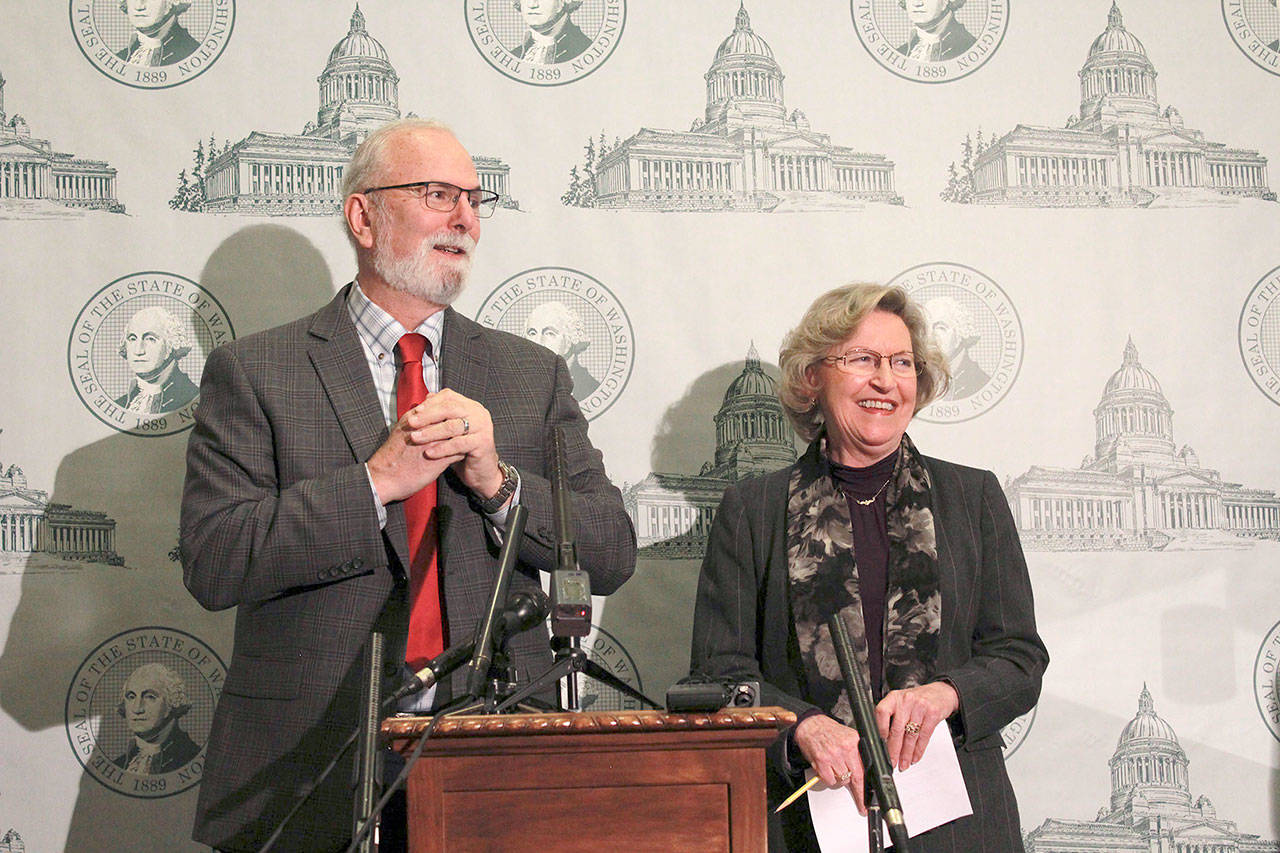By Taylor McAvoy
WNPA Olympia News Bureau
OLYMPIA — Republican lawmakers have introduced a bill that would allow school administrators, and in some cases teachers, to carry firearms in Washington state classrooms.
Conversation around gun legislation and school safety programs ignited across the nation in response to a Feb. 14 shooting at a high school in Parkland, Fla., in which 17 people were killed.
While the bill allows for concealed weapons to be carried on campus by qualified adults, SB 6622 does not require it.
If school officials plan to implement the program, the bill requires rigorous screening to determine if the school district is fit for such a program. It also requires training with the Washington State Criminal Justice Training Commission.
Lawmakers unveiled the bill at a press conference Wednesday. Sen. Phil Fortunato, R-Auburn, is the bill’s prime sponsor.
State Sen. Kevin Van De Wege, D-Sequim, said Thursday the bill is a step in a direction he does not want to go: arming teachers.
The vast majority of state teachers, school administrators, and parents and state residents in general agree with that position, said Van De Wege, whose 24th District includes Clallam and Jefferson counties.
“You don’t create a program like that and it’s free,” he said. “It costs money.”
Van De Wege predicted Fortunato’s bill will not pass the Senate.
“In the last week of the session, taking on this issue and having it cost $5 million is probably going to be a tough sell,” Van De Wege said.
Fortunato pointed to the Toppenish School District that already implements a concealed carry program.
In response to the shooting at Sandy Hook Elementary in Newtown, Conn., in December 2012, the Toppenish School District passed its gun policy in 2014.
The policy arms only administrators, not teachers, district Superintendent John Cerna said. The Yakima Herald reported that in 2016, 18 administrators volunteered to carry guns and undergo the training required. However, they remain anonymous due to safety concerns, Cerna said.
The training, he explained, is twice a month for two hours at a time with law enforcement in the classroom and on a shooting range.
“It’s logical to say, we have to have something in place where we can have immediate response inside that school,” said Jon Ladines, active shooter training instructor and owner of Force Dynamics Security Consulting.
“Gap training,” Ladines calls it, teaches school staff members who are unarmed to fortify and defend rooms until police arrive. Still, he said, it’s important to have someone there to protect students, if an active shooter gets through a door.
“We keep missing the mark with passing different types of legislation,” he said. “The bottom line is that you can’t take away the human element of protection.”
Currently, 18 states allow armed adults on school property.
Gov. Jay Inslee confronted President Donald Trump on Monday during a meeting with state governors at the White House to discuss gun violence issues.
“You have a gun free zone, it’s like an invitation for these very sick people to go there,” Trump said.
He suggested that teachers who are adept with guns should be allowed to bring them to schools to protect children.
“Educators should educate and they should not be foist upon this responsibility of packing heat in first-grade classes,” Inslee responded.
Rep. Dan Kristiansen, R-Snohomish, proposed a similar idea during a Republican leadership media availability Feb. 15, the day after the shooting in Parkland, Fla.
He suggested arming teachers who are already trained to use firearms.
“Until the federal government and the state Legislature really take a look at the mental illness that is occurring across the country and across the state, we’re going to continue to have carnage in schools,” Cerna said.
Another proposal to address the school shooting threat has drawn bipartisan support.
SB 6618, sponsored by Sen. Barbara Bailey, R-Oak Harbor, would require every school in Washington state, public and private, to employ at least one licensed mental health counselor.
The bill is meant to encourage communication between students, counselors and teachers.
“What’s missing is we’re not helping our children,” Bailey said.
“We’re not helping our kids who are under a great deal of stress; who are working hard to accomplish their academics.”
_______
This story is part of a series of news reports from the Washington State Legislature provided through a reporting internship sponsored by the Washington Newspaper Publishers Association Foundation.
Senior Staff Writer Paul Gottlieb contributed to this story.

